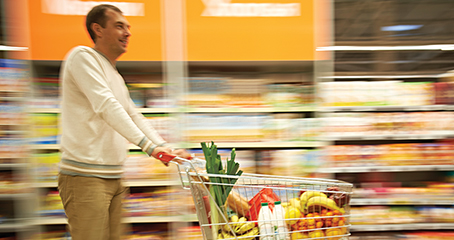On the merger side, consolidation has slowed a bit since Loblaw’s purchase of Shoppers Drug Mart (for $12.4 billion) and Sobeys’ acquisition of Canada Safeway in 2013 (for $5.8 billion), but the major chains continue to forge smaller deals.
In 2015, for example, Sobeys bought Co-Op Atlantic, taking over operations of 10 corporately-owned stores and finalizing supply deals with most of the remaining 48 co-op member stores, and also acquired Pete’s Fine Foods in Nova Scotia.
Even as the bigger players convert some of their banners to lower-cost options, they are also moving conventional formats upscale—by imitating the moves of specialists—adding to produce assortments, strengthening natural and organic selections, enhancing the range of ethnic products, and featuring in-store food bars and in-store specialty boutiques.
Loblaw’s Provigo le Marché store in Kirkland, Quebec opened a Lebanese boutique section with 150 varieties of nuts, dried fruits, and confectionery items. Called Alrifai, the in-store selection is modeled after a Lebanese retailer of the same name with 400 stores in 38 cities around the world. Further, Loblaw’s 22 Fortinos stores in the Toronto area partnered with Procolombia for three months in the spring of 2015 to offer exotic fruits such as physalis (also known as tomatillos), pitaya, passion fruit, grenadillas, and tamarillos, supported by recipes and in-store samplings, to spur shoppers to try unfamiliar produce items.
Substantial Investments
Overall, Loblaw invested more than C$1.2 billion in its stores in 2015, building new or renovating existing locations, with one of the stated goals to create better access to fresh food and wellness solutions.
Similarly, some of Sobeys’ initiatives in 2015 included launching its extra banner in Nova Scotia, which includes a wider assortment of produce, including local and organic varieties, store-made pre-cut fruits and vegetables and salads, and Sobeys-wide programs such as organizing tomatoes by sweetness and potatoes by usage. The operator also opened a Chalo! FreshCo store in Brampton, Ontario, its first discount format devoted to South Asian foods, along with traditional FreshCo offerings. Its Thrifty Foods chain in British Columbia holds samplings from local vendors, such as organic produce from Kildara Farms in North Saanich.
For its part, Metro is upgrading many of its stores. The retailer invested C$8 million in its Metro Plus location in Levis, Quebec, expanding it nearly 10,000 square feet, improving product offerings, and adding an outdoor patio, bistro, and Premiere Moisson bakery. The store’s produce department includes a counter for fresh smoothies, juices, and fruit salads.
Metro is also expanding its range of local product offerings, focusing on the Local Purchasing Policy implemented in 2013. The company hosts local farmers selling organic vegetable baskets in 31 Metro stores and one Super C across Quebec each week, and introduced 92 new grocery products from 16 local producers in 12 Metro and Super C locations in the Lower St. Lawrence region. Renovated Metro stores increased produce assortments by 50 percent.
Online Competition
With the success of Amazon and other e-tailers in Canada, supermarkets are looking at how to position and promote online offerings, from straight e-commerce to click-and-collect programs.
Bourlier notes that while fresh foods have traditionally been challenging categories for e-commerce, an increasing number of consumers have found online ordering convenient and not fraught with risk, even for produce. “I’m reluctant to say anything can’t be done well online,” she says. She believes e-commerce will be a significant factor for food sales in three to five years, with more players launching initiatives in 2016 and beyond.
Walmart Canada continues to be a leader in the click-and-collect market. In 2015, the mega retailer added six 7-Eleven stores in the Toronto area to its ‘Grab & Go Locker’ network, a platform consumers can use to order online with purchases packed and stowed in lockers at various locations for 24/7 pickup. There were also grocery pickup services in 11 of Walmart’s Ottawa area stores in 2015, allowing shoppers to pick up online orders, including fresh food items, in stores. In addition, Walmart Canada has been expanding its fresh grocery selection, sourcing from both foreign and Canadian vendors.



